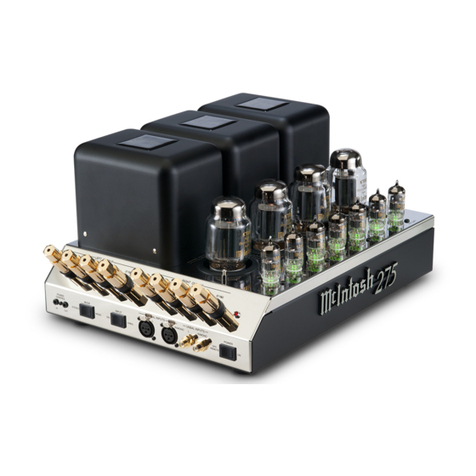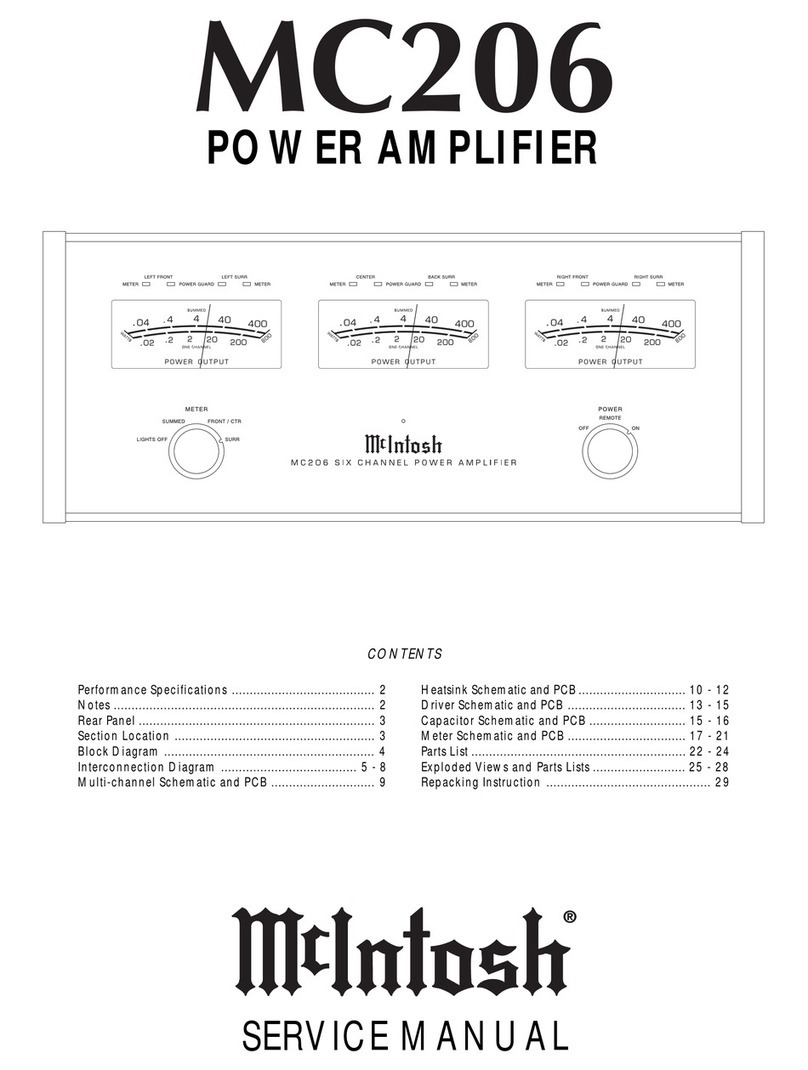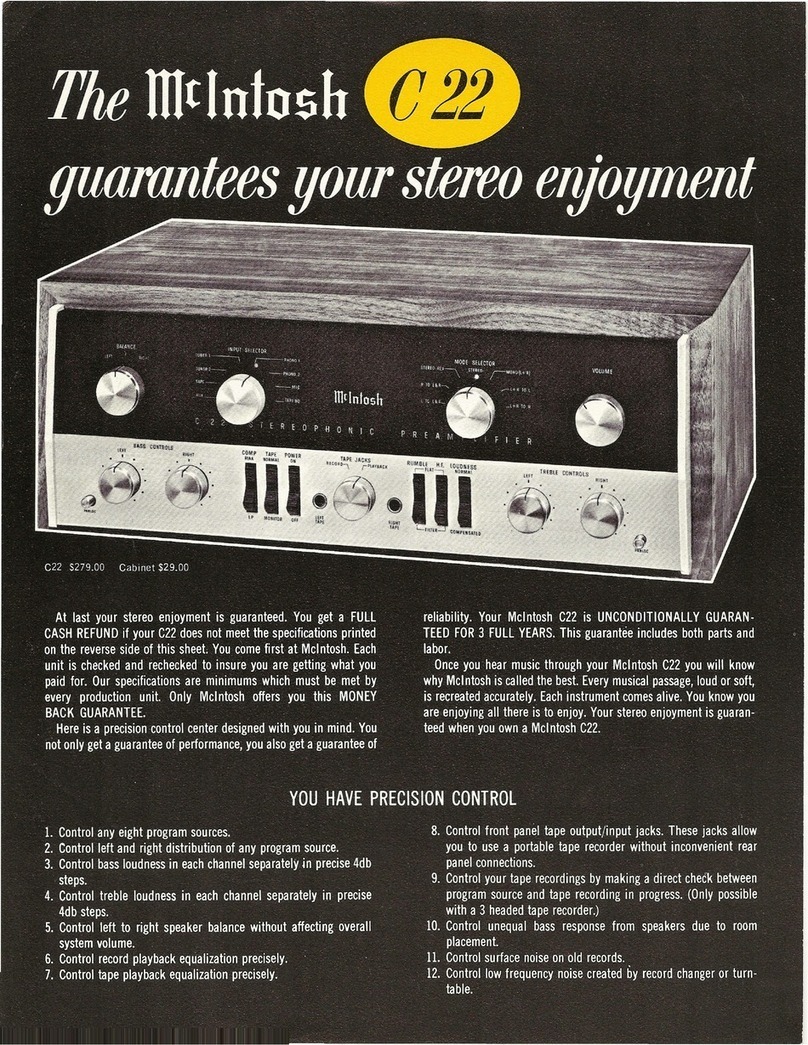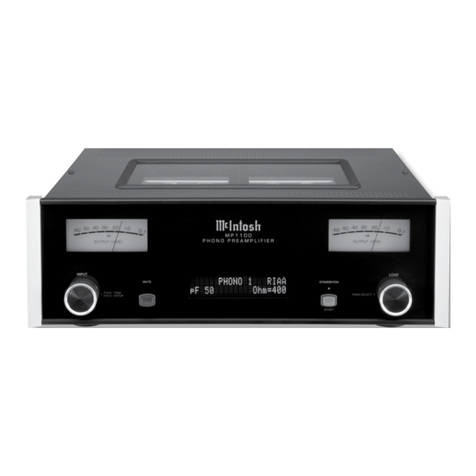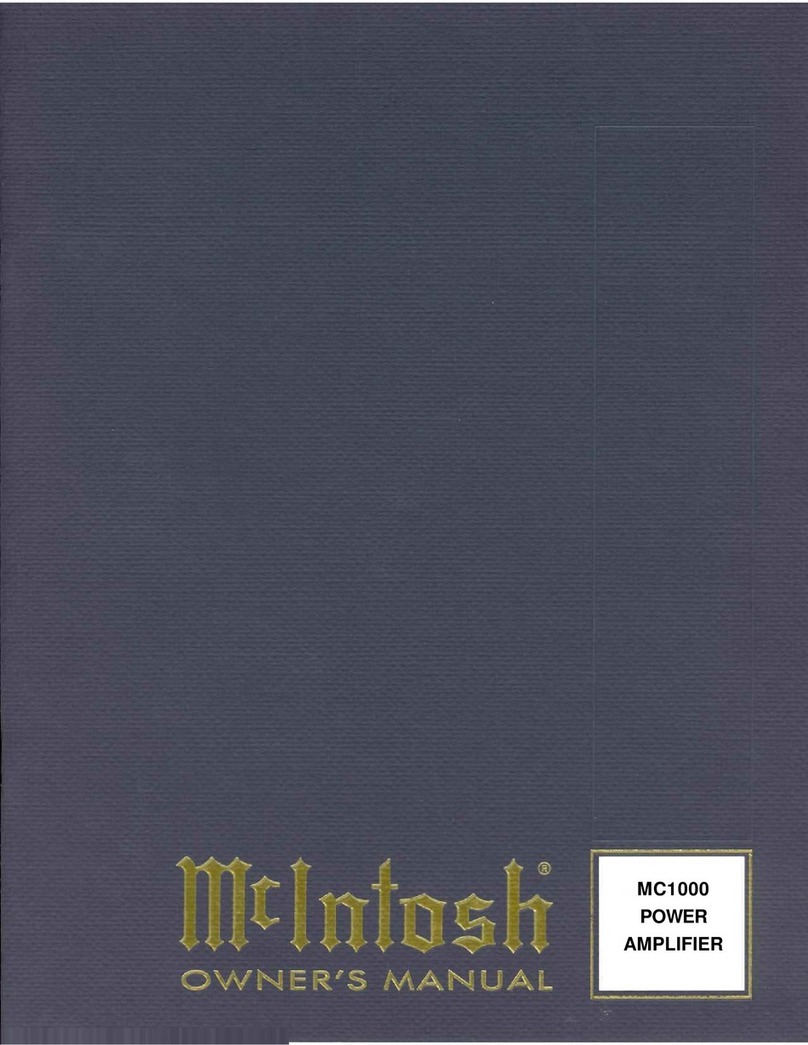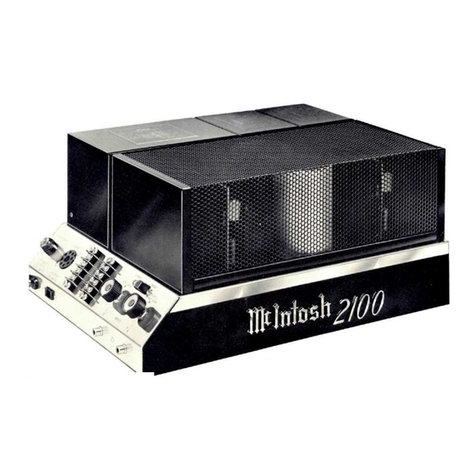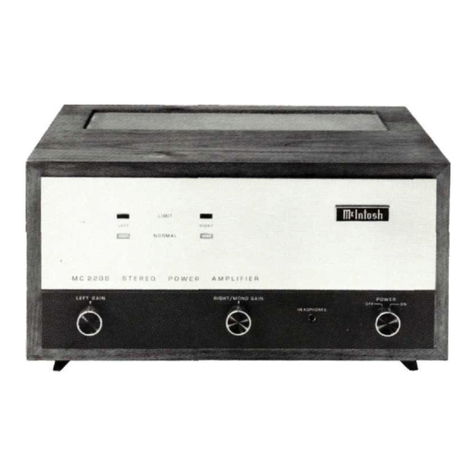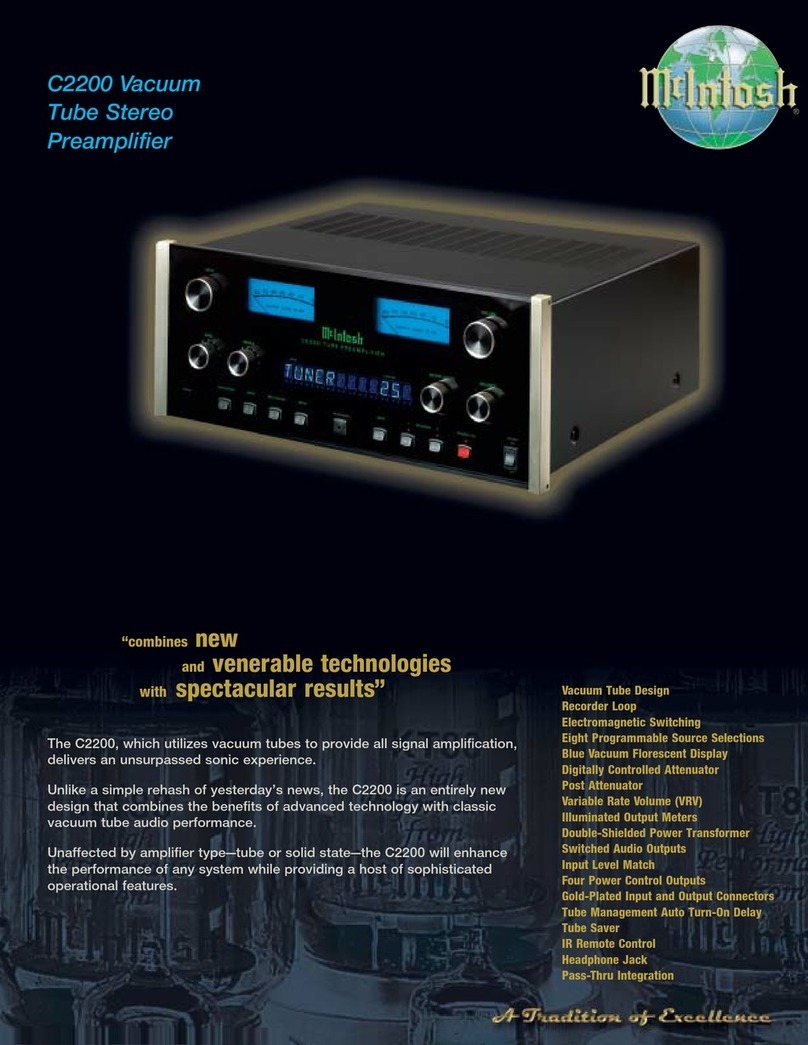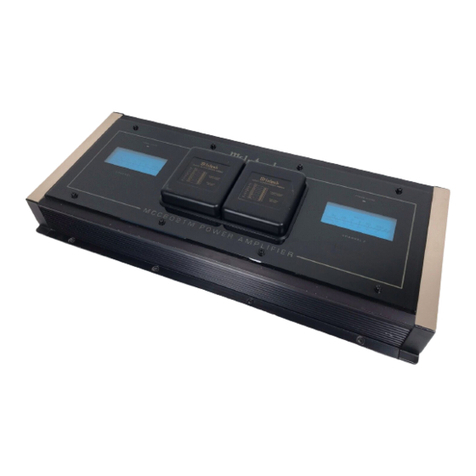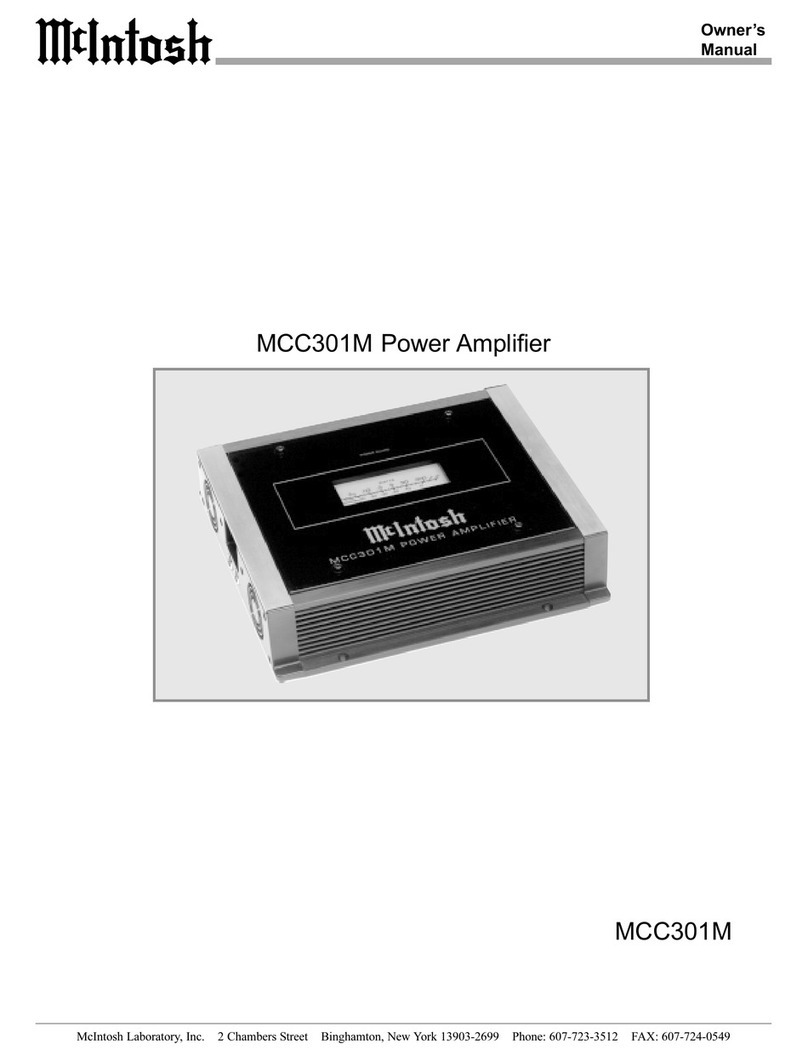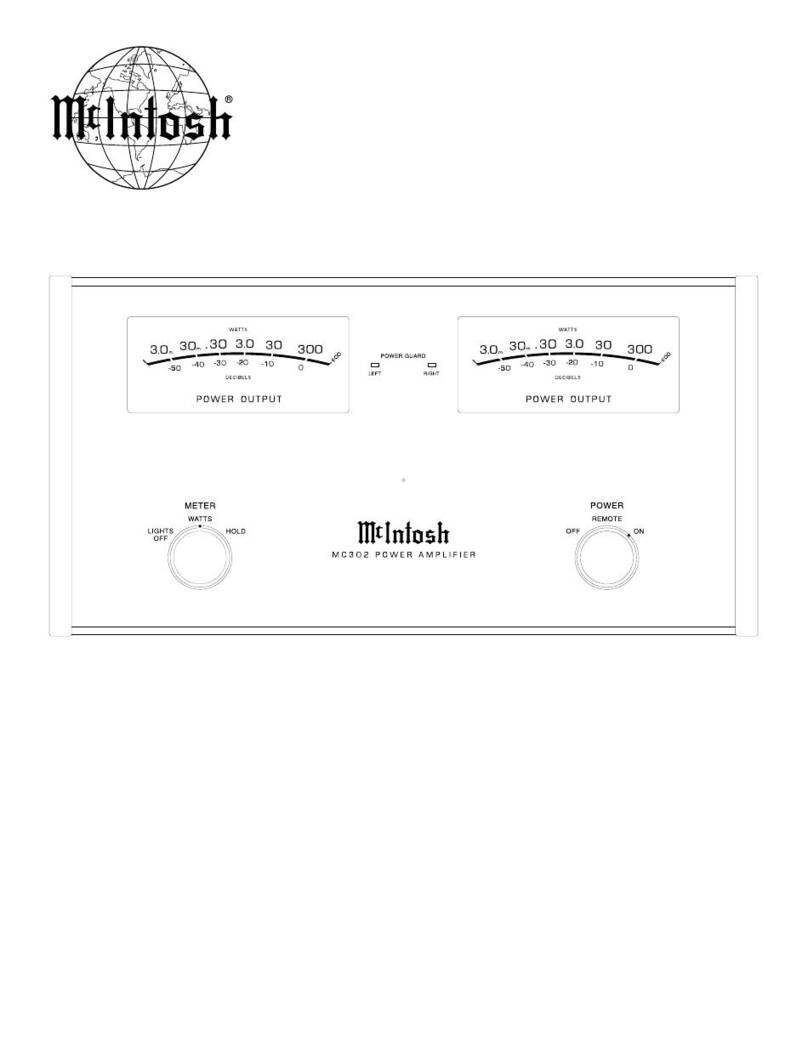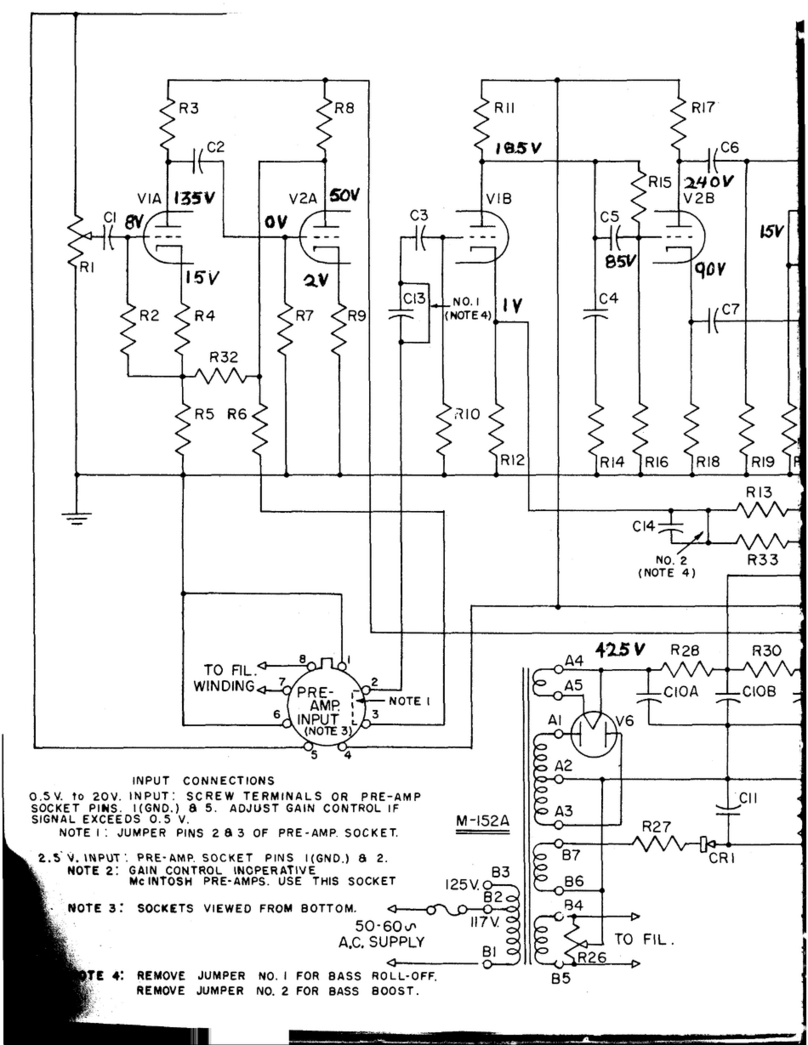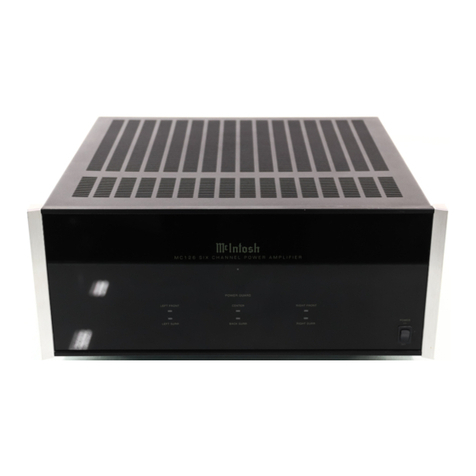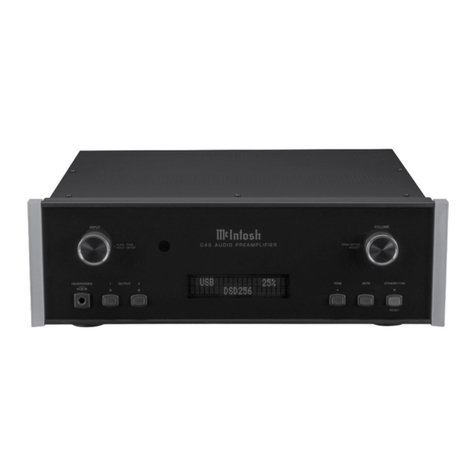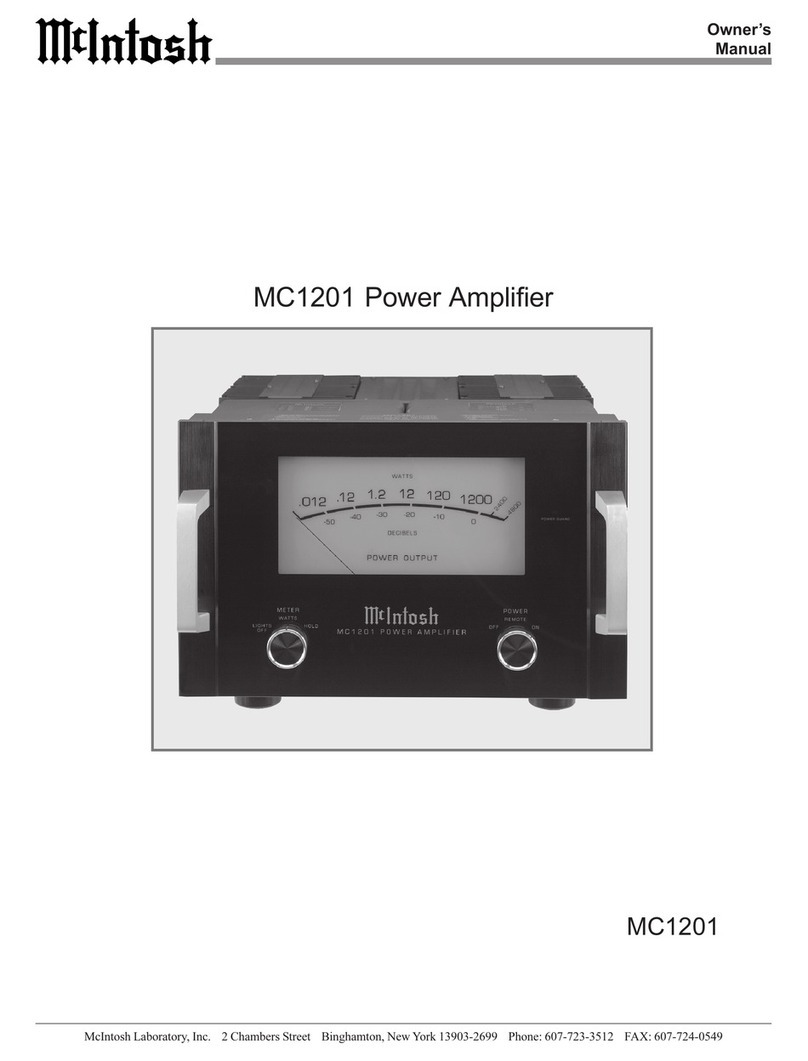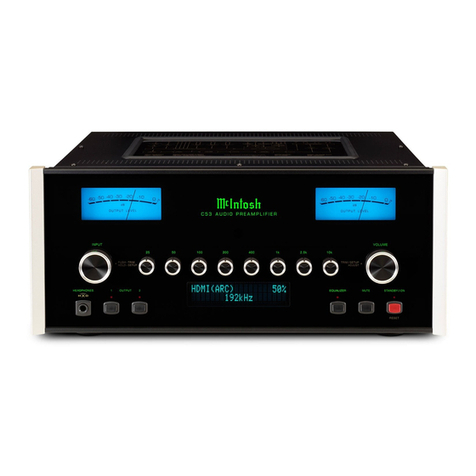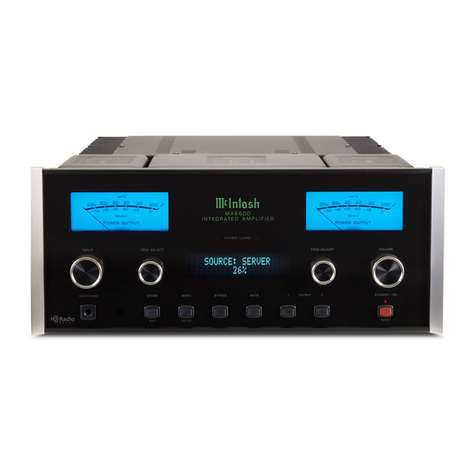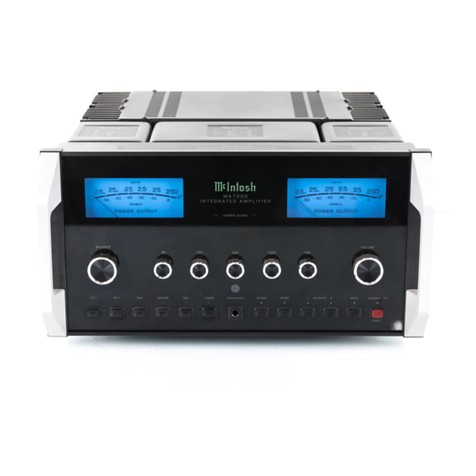
MOUNTING INSTRUCTIONS
(Serial No. 6L001 and Later)
Your C-20 Stereo Prearnplifier rnay be rnounted in a cabinet of your own, in the Mclntosh
Cabinet Model L-66, ot on a rack panel.
MOUNTING IN YOUR OWN CABINET.
This prearnplifier has been designed to mount on a shelf or from the front panel if the
panel thickness is 3/8" or rnore. It is suggested that the instructions be read through com-
pletely before starting the installation.
Enclosed in the Instruction Manual envelope are two copies of the "WOODEN PANEL
CUTOUT TEMPLATE" and two copies of the "SHELF CUTOUT TEMPLATE'| for mounting
the C-20.
Prepare the cabinet for the mounting by first cutting the wooden panel to receive the pre-
arnplif ie r .
l. On the back of the wooden cabinet panel make a vertical center line on the exact center
of the area in which the preamplifier will rnount.
In the parts bag that was packed with the prearnplifier there are two metal mounting striPs
l/2" wide and 3 I12" Long. The "WOODEN PANEL CUTOUT TEMPLATE" shows how the
rnounting strip is used as a measuring guide to locate the two "LOCATION HOLES. ''
Z. Take the rnounting strip and with a pencil mark one length 13 LlT"l both to the right
and to the left of the vertical center line, approxirnately one rnounting strip length above the
sheIf.
Rest the end of the rnornting strip on the shelf and mark one length (3 l'2"1 vertically.
Where these rnarks intersect is the position of the "LOCATION HOLES. "
3. Drill these two holes with a 3/16" drill being careful to hold the drill as nearly per-
pendicular as possible so as not to transfer any error in location of the holes to the front of
the cabinet.
4. Transfer the "WOODEN PANEL CUTOUT TEMPLATE" to the front of the wooden
cabinet panel. Match the "LOCATION HOLES'| for the ploper positioning of the template.
Caref ully drill the s ix 3 I I6" rnounting hole s .
5. Cutout the openingin the cabinet keep-
irg within the line s . If the s aw doe s not quite
reach the line s, finish the opening with a file
or coarse sandpaper.
6 . Us ing two f lathe ad rnachine s c re ws
fasten the two mounting strips on the back of
the cabinet panel so that the edge of the mount-
irg strip is flush with the edge of the cabinet
hole, and that the rnounting hole s coincide with
the mounting s trip nuts . Two lengths of
s c rews are provided f or diffe rent cabinet pan-
eI thicknesse. (Flathead 6-32 x LlZ" and
6-32 x I Ll4"l.
IMPORTANT: The heads of the two flat-
he ad rnachine s c re ws holding the rnounting
strips in place rnust be flush with the front
s urface of the cabinet. If the s crews will not
p ull into the wood , a s light c ounte r s ink with an
oversize drill rnay be necessary.
,@
# 6-32
FLATHEAD
MACHINE SCREW
/#'
dIk
UNTING
STRI P
SPRING
CLI PS
CABINET PANEL
CUTOUT
-5-
MOUNTING HOLES

